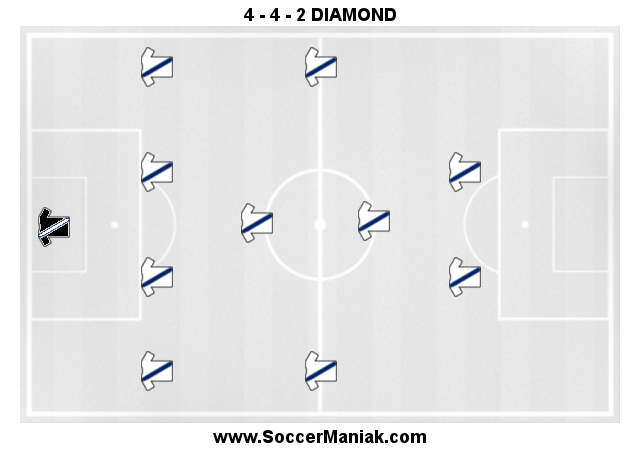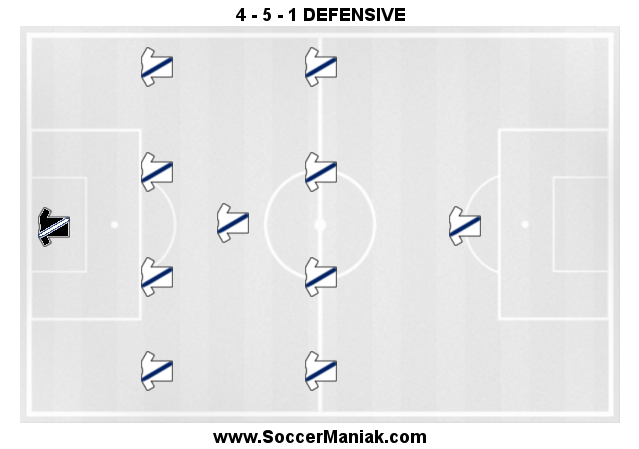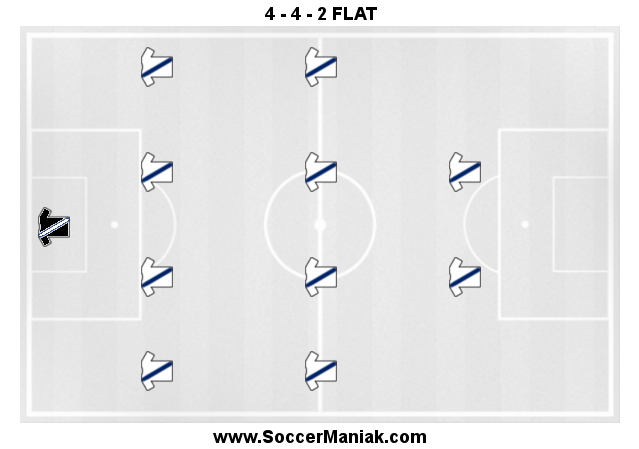Soccer Formations and Tactics

Soccer formations and tactics are used by Coaches to organize the players on the field, and improve the chances of tactically beating the opponent.
Different clubs use different soccer tactics and formations when lining up the players on the field.
Many people don't understand the importance of formations in soccer and how soccer formations dictate the style of play and team structure.
Coaches often face difficulty when preparing for the game, since there are so many different soccer formations and tactics.
Different Soccer Formations

More popular formations used in the game today are:
- 4-4-2 Soccer Formation
- 3-5-2 Soccer Formation
- 4-3-3 Soccer Formation
- 3-4-3 Soccer Formation
- 4-5-1 Soccer Formation
- 4-2-3-1 Soccer Formation
- 3-2-3-2 Soccer Formation
A variety of different soccer tactics often makes Coaches complicate things by changing up team system of play and hoping that the players will adapt to different positions on the field.
This often results in confused players who have difficulty staying in their position, or knowing their responsibilities on the soccer field.
Every formation needs to be trained many times during soccer training sessions.
What Are Soccer Team Formations and Tactics?

Soccer formation is a blueprint of players positions at the start of the match and the direction of movement throughout the game.
Each soccer position compliments another position, filling the space on the field, and giving different players different responsibilities on attack and defense.
Formations in soccer help Coaches hide the weaker spots on the field during the soccer game.
Different soccer formations and tactics will position the players into more attacking or defensive roles on the field. Soccer tactics will set the rhythm of the game.
Different formations will require short passing channels and building the attack from the defense and thorough the middle of the field. In contrast, other soccer formations and tactics used in the game will call for utilizing the wings, and concentrating on long passing, and crosses.
Keep It Simple with Soccer Formations!

Please keep it simple when choosing formations and tactics for novice or beginner teams. Soccer formations can get complicated and messy, very quickly.
My advice is to focus on simplicity, rather than drawing different complicated formations on the board.
Complicated tactics have to be trained often during practice, to make an impact in a soccer match.
Players need to learn how to play this game, and feel comfortable with the soccer ball, before being introduced to different soccer tactics, formations, and positions.
Avoid confusing players younger than 12 years old with different soccer tactics and formations. Simple 4-4-2 tactic will teach youthful players to play and respect different positions on the soccer field.
4-4-2 soccer formation is an ideal and most straightforward way to set up the players on the field.
4-4-2 formation will have four defenders, four midfielders, and two forwards.
Advanced Soccer Formations and Tactics
More advanced club teams playing competitive soccer at a higher level will use soccer tactics and formations as weapons against their opponents.
More competitive club Coaches will study the opponent, and decide on the formation for the upcoming match based on how the opponent lines up their team.
Soccer tactics come into play as the players get older, and have a better understanding of their positioning.
Coaches learn the pros and cons of different soccer formations, and the best way to apply specific tactics for the game.
Every formation has positive and negative aspects to the game.
Learning and studying different formations and tactics will lead to a better informed and more educated coach. Educated coaches make every game tough on their opponent. The soccer field is big and open. Knowing where to expose space is crucial to winning games.
Great Coaches are similar to war generals. They study their opponents and exploit their weaknesses on the field of play (battle).
SOCCER FORMATIONS AND TACTICS
- 4-4-2 Soccer Formation is the most popular system of playing by many clubs around the world.
- 3-5-2 Soccer Formation has a more attacking style of play, with the strength of the formation coming from the midfield.
- 4-3-3 Soccer Formation is one of the classic soccer formations that was first introduced in 1962 by the great Brazil side.
- 4-5-1 Soccer Formation is a defensive minded system of play and not that many teams use it as a starting formation in a match.
- 4-2-3-1 Soccer Formation is one of the emerging modern systems of play that provides a more attacking style but is also covered very well defensively.
- 3-4-3 Soccer Formation provides an offensive and attack minded system of play.